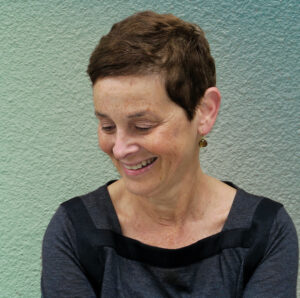Lisa E. Bloom, Ph.D., ’80

DEGREES: B.A. in art history; M.F.A. in photography, Rochester Institute of Technology; Ph.D. University of California Santa Cruz
JOB TITLE: Independent scholar and writer; former scholar-in-residence, Institute for Gender and Sexuality Research, Department of Gender and Women’s Studies, University of California, Berkeley
FAVORITE TRINITY MEMORY: Studying quattrocento painting with Professor Tom Baird, which prepared me for my semester in Rome, is a cherished memory. Exploring Italian art and culture with friends who shared my passion for the arts was unforgettable and laid the groundwork for my interdisciplinary career.
What have been your career highlights?
My career highlights encompass writing books, mentoring students, and teaching at Josai International University in Japan (1998–2001) as part of the country’s first Gender and Women’s Studies Ph.D. Program. A particularly meaningful experience was co-editing a special issue of The Scholar and Feminist journal and organizing an international conference at Barnard College in 2008 during the International Polar Year. Both events reengaged me with themes from my first book, Gender on Ice: American Ideologies of Polar Expeditions (University of Minnesota Press, 1993).
I am also the author of the anthology With Other Eyes: Looking at Race and Gender in Visual Culture (University of Minnesota Press, 1999) and of Jewish Identities in American Feminist Art: Ghosts of Ethnicity (Routledge, 2006). My interdisciplinary approach to these books reflects my career-long interest in feminist art history, photo history, and visual culture. My teaching and research experiences span numerous institutions, including serving as a scholar-in-residence at the Institute for Gender and Sexuality Research in the Department of Gender and Women’s Studies at the University of California, Berkeley (2018–24).
The interdisciplinary nature of Gender on Ice made it challenging to secure a traditional academic position when it was published in 1993. This led me to pivot to feminist art history and photo history, fields where I found institutional support and developed innovative approaches that shaped my later work.
What inspired you to write your new book, Climate Change and the New Polar Aesthetics: Artists Reimagine the Arctic and Antarctic?
My fascination with the polar regions began with Gender on Ice, a feminist exploration of masculinity, colonialism, and exploration. My new book expands these themes, addressing the uncanniness and estrangement caused by the climate crisis. The artists featured in the book draw on feminist environmentalism, speculative fiction, and Indigenous perspectives to critique mainstream media’s apocalyptic depictions of climate change. They link these issues to gender, race, and colonial legacies, disrupting conventional narratives about the natural world.
As I completed the book in 2021, during the pandemic, parallels between the world’s unpreparedness for COVID-19 and its response to climate change became starkly evident. Unlike the rapid development of vaccines, there have been no comparable breakthroughs to address the climate crisis, which underscores the urgency of reimagining our political and cultural responses to these challenges.
What do you enjoy most about your work?
I value collaborating with artists, scholars, and students from diverse fields. These exchanges constantly expand my thinking. Currently, I’m working with students at UC Berkeley on a project titled Contemporary Art for a Changing World: Conversations on Art and Climate Change through an Intersectional Lens. This builds on my recent book, focusing on feminist environmentalism and global climate justice.
How did your time at Trinity prepare you for what you do now?
My time at Trinity laid the foundation for my work at the intersection of gender, race, colonialism, and contemporary art. Professors like Judy Rohrer and Kaja Silverman were instrumental in shaping my intellectual trajectory. Rohrer’s feminist art history classes introduced me to critical theory through authors like Susan Sontag as well as sociological perspectives on art through the writings of Arnold Hauser and Erving Goffman. One memorable assignment involved writing about a feminist group exhibition at the Wadsworth Atheneum, featuring work by Eleanor Antin. This paper influenced my later scholarship, including my third book, Jewish Identities in American Feminist Art, and more recently an article titled “Eleanor Antin’s Subversive Feminist Art” for a museum retrospective of her work at the Mudam Museum of Modern Art in Luxembourg opening in September 2025. Silverman’s film studies class sparked my lifelong interest in postwar European cinema and influenced my graduate studies in feminist film theory. Trinity’s Rome program also deepened my appreciation for interdisciplinary inquiry. Studying Italian art history, architecture, and cinema while forming lasting friendships with classmates like Dede Faulkner and Amy Bagan enriched both my personal and professional life.
After Trinity, I pursued an M.F.A. at the Rochester Institute of Technology and the Visual Studies Workshop and a Ph.D. in the History of Consciousness Program at UC Santa Cruz, where I studied with Donna Haraway, James Clifford, and Fredric Jameson. My postdoctoral fellowships at Stanford and Brown further honed my interdisciplinary approach.
What challenges do you face?
Balancing the emotional weight of climate change with research demands is a persistent challenge, particularly in light of events like the Los Angeles fires. However, the creative responses of artists and scholars offer hope and new ways of imagining sustainable futures.
